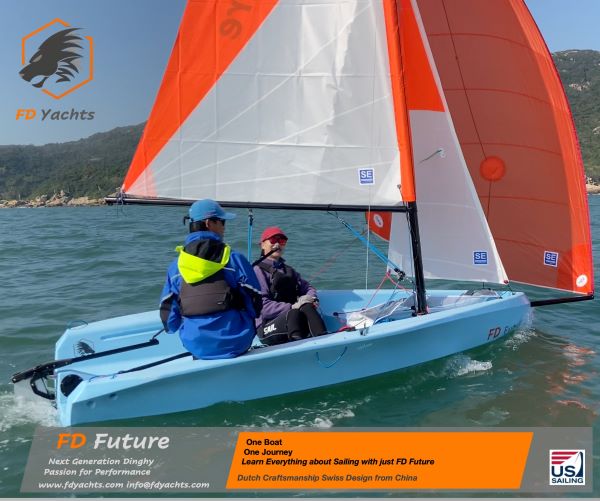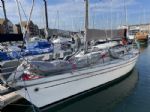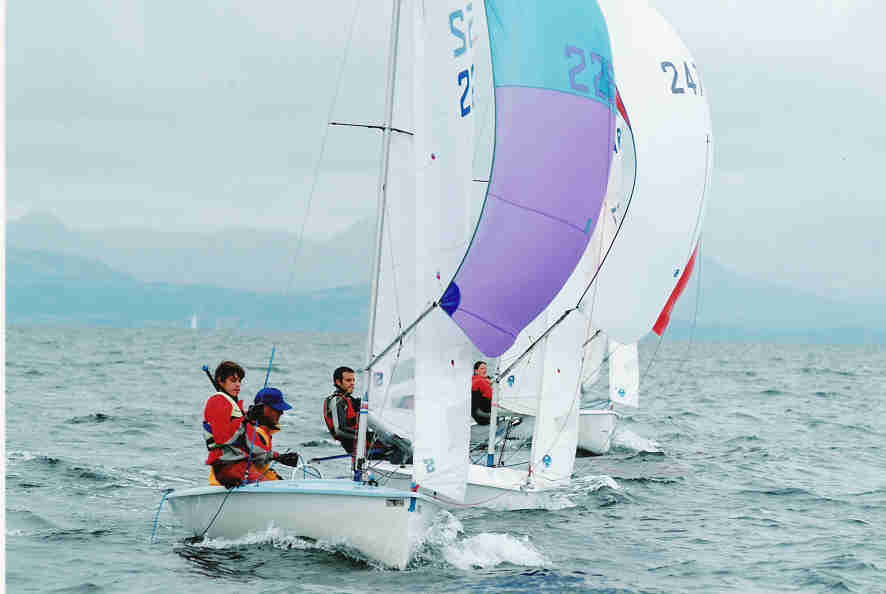












| Laser 28 - Excellent example of this great design Hamble le rice |
 |
| Rossiter Pintail Mortagne sur Gironde, near Bordeaux |
 |
List classes of boat for sale |
Proper Course |
Post Reply 
|
Page 12> |
| Author | |||
iansmithofotley 
Far too distracted from work 
Joined: 16 Mar 04 Location: Otley, West Yorkshire Online Status: Offline Posts: 209 |
 Post Options Post Options
 Quote Quote  Reply Reply
 Topic: Proper Course Topic: Proper CoursePosted: 15 Apr 10 at 9:16pm |
||
|
Hi everyone,
We have had a similar discussion before: http://www.yachtsandyachting.com/forum/forum_posts.asp? TID=5737&PN=2 Ian (Yorkshire Dales S.C.) |
|||
 |
|||
JimC 
Really should get out more 

Joined: 17 May 04 Location: United Kingdom Online Status: Offline Posts: 6662 |
 Post Options Post Options
 Quote Quote  Reply Reply
 Posted: 15 Apr 10 at 7:40pm Posted: 15 Apr 10 at 7:40pm |
||
What goes around comes around... it never pleases me I have to duck round a leeward boats transom to avoid getting stuffed into wind by something that can point 5 degrees higher than me either...
Its worth noting that the case I quoted from the case book goes back to the 1960s and umpteen rule revisions, and also seems to be about boats of the same class... This is very well established. Lets face it, windward boat keeps clear is a very fundamental rule, and we all know that if you don't want someone to take you up you go behind them, whether its a beat or a reach or a run. The "was it a proper course" question is usually very easy to decide in the room: the question is "did L continue to sail at that angle when the overlap ended". If the answer is no then L is probably toast unless they can produce witnesses who will agree they sailed the same hot angle at numerous other times in the race when conditions were similar and there were no other boats about. Edited by JimC |
|||
 |
|||
Guests 
Guest Group 
|
 Post Options Post Options
 Quote Quote  Reply Reply
 Posted: 15 Apr 10 at 7:39pm Posted: 15 Apr 10 at 7:39pm |
||
|
Well why not have something like
'Except on a beat to windward, proper course is for a boat to travel in the direction of the buoy in which they are next to round.' This would make everything quite clear cut. They come from behind, and can luff no higher than making the boat to windward simply aim at the buoy. That way the boat to windward and boat to leeward are quite clear on the exact point to where that can luff/can be luffed. Thoughts on that anyone? Doug H |
|||
 |
|||
Rupert 
Really should get out more 
Joined: 11 Aug 04 Location: Whitefriars sc Online Status: Offline Posts: 8956 |
 Post Options Post Options
 Quote Quote  Reply Reply
 Posted: 15 Apr 10 at 7:29pm Posted: 15 Apr 10 at 7:29pm |
||
|
Yep, proper course is odd, but I can't think of anything better. The rules really weren't dsigned for handicap racing, where boats want to sail radically different angles. You can have a situation where an Asym goes behind and to lee of you in a gust, sailing her proper course. The wind then drops, so her proper course to keep the kite filling is to luff up. She then luffs up, still on proper course, and makes the boat she has just caught up with luff up too. Doesn't seem right or fair, but I can't see anything wrong with it.
|
|||
|
Firefly 2324, Puffin 229, Minisail 3446 Mirror 70686
|
|||
 |
|||
Guests 
Guest Group 
|
 Post Options Post Options
 Quote Quote  Reply Reply
 Posted: 15 Apr 10 at 7:04pm Posted: 15 Apr 10 at 7:04pm |
||
I agree but with the definition of proper course effectively being about what someone 'perceives' as being the quickest route, the potential is there. A reverse scenario - In lasers in waves it is now generally known that zigzagging from reaching to by the lee is the quickest route downwind. Surely then, a boat to windward could claim that the boat to leeward should be going by the lee on a particular wave and is therefore luffing well above their proper course?? I realise people may well not agree with me but it seems the definition of what is a proper course doesn't leave the rules with a clear cut standing of what is legal and illegal. Instead it leaves us with a sailor's personal opinion on what is quick or not. |
|||
 |
|||
Garry 
Really should get out more 

Joined: 18 Apr 04 Location: United Kingdom Online Status: Offline Posts: 536 |
 Post Options Post Options
 Quote Quote  Reply Reply
 Posted: 15 Apr 10 at 6:32pm Posted: 15 Apr 10 at 6:32pm |
||
not true, imho, you would need to have some very sound reasoning to sail more than about 10 degrees higher than other boats of similar type on the same leg to convince a pc. furthermore if you sailed an arc and then bore away you would probably shoot yourself in the foot demonstrating the higher course was for tactical reasons. Also passing a boat to leeward without a wave to catch is pretty difficult. Assuming this was handicap racing you've just both lost places. |
|||
|
Garry
Lark 2252, Contender 298 www.cuckoos.eclipse.co.uk |
|||
 |
|||
Guests 
Guest Group 
|
 Post Options Post Options
 Quote Quote  Reply Reply
 Posted: 15 Apr 10 at 6:12pm Posted: 15 Apr 10 at 6:12pm |
||
|
Well surely the rule about a boat coming from behind not luffing above
proper course may as well be deleted because they could simply come from behind at any time and luff wherever they like claiming it's the quickest route. I could approach from astern on a reach, luff up causing a big arc and claim that that's my proper course.....?? Utterly pointless having the rule there if it takes into account what someone feels is quick or not. |
|||
 |
|||
AlexM 
Really should get out more 
Joined: 10 Jan 06 Online Status: Offline Posts: 857 |
 Post Options Post Options
 Quote Quote  Reply Reply
 Posted: 15 Apr 10 at 5:09pm Posted: 15 Apr 10 at 5:09pm |
||
I agree with Mike, it was silly of the assym to go below the symmetric boat and then once the the kites were hoisted they needed to head up! just slowed both down. Alex Edited by AlexM |
|||
 |
|||
mike10626 
Groupie 
Joined: 04 Jul 08 Online Status: Offline Posts: 72 |
 Post Options Post Options
 Quote Quote  Reply Reply
 Posted: 15 Apr 10 at 4:46pm Posted: 15 Apr 10 at 4:46pm |
||
|
Forgetting the rules for a second, isn't this strategically a bad position for the asymmetric boat to get herself in ? If she had remained above the symmetric boat he would have got up to speed quicker and got away. Going below she has to wait until she establishes an overlap, then shout and give the other boat time to get clear before she can power up. I can see it makes sense in a one design asymmetric fleet as this puts you in the controlling position but for handicap racing doesn't it just slow you down? I tend to agree the rules are on the side of the asymmetric boat - just not sure of the logic? |
|||
|
RS500'S@Datchet - The Country's largest Trapeze Asymmetric Fleet ?
|
|||
 |
|||
JimC 
Really should get out more 

Joined: 17 May 04 Location: United Kingdom Online Status: Offline Posts: 6662 |
 Post Options Post Options
 Quote Quote  Reply Reply
 Posted: 15 Apr 10 at 4:19pm Posted: 15 Apr 10 at 4:19pm |
||
In the definitions:
So yes, its any course that you can convince the PC could be reasonable. Case 14 in the case book illustrates this - it appears to be about two boats in the same class:-
Edited by JimC |
|||
 |
|||
Post Reply 
|
Page 12> |
| Forum Jump | Forum Permissions  You cannot post new topics in this forum You cannot reply to topics in this forum You cannot delete your posts in this forum You cannot edit your posts in this forum You cannot create polls in this forum You cannot vote in polls in this forum |
Copyright ©2001-2010 Web Wiz
Change your personal settings, or read our privacy policy












 Printable Version
Printable Version Delicious
Delicious Digg
Digg Facebook
Facebook Furl
Furl Google
Google MySpace
MySpace Newsvine
Newsvine reddit
reddit StumbleUpon
StumbleUpon Twitter
Twitter Windows Live
Windows Live Yahoo Bookmarks
Yahoo Bookmarks Topic Options
Topic Options